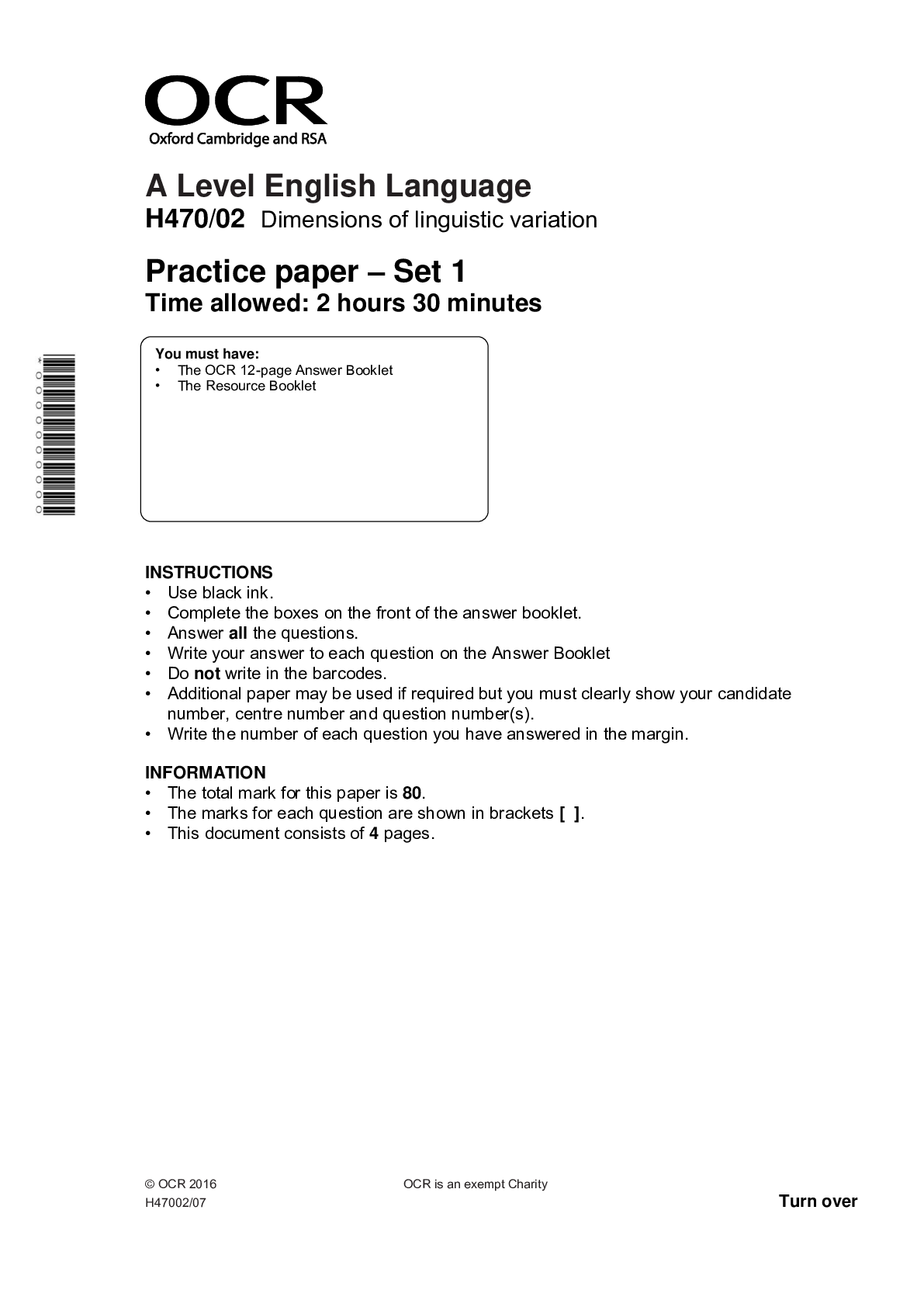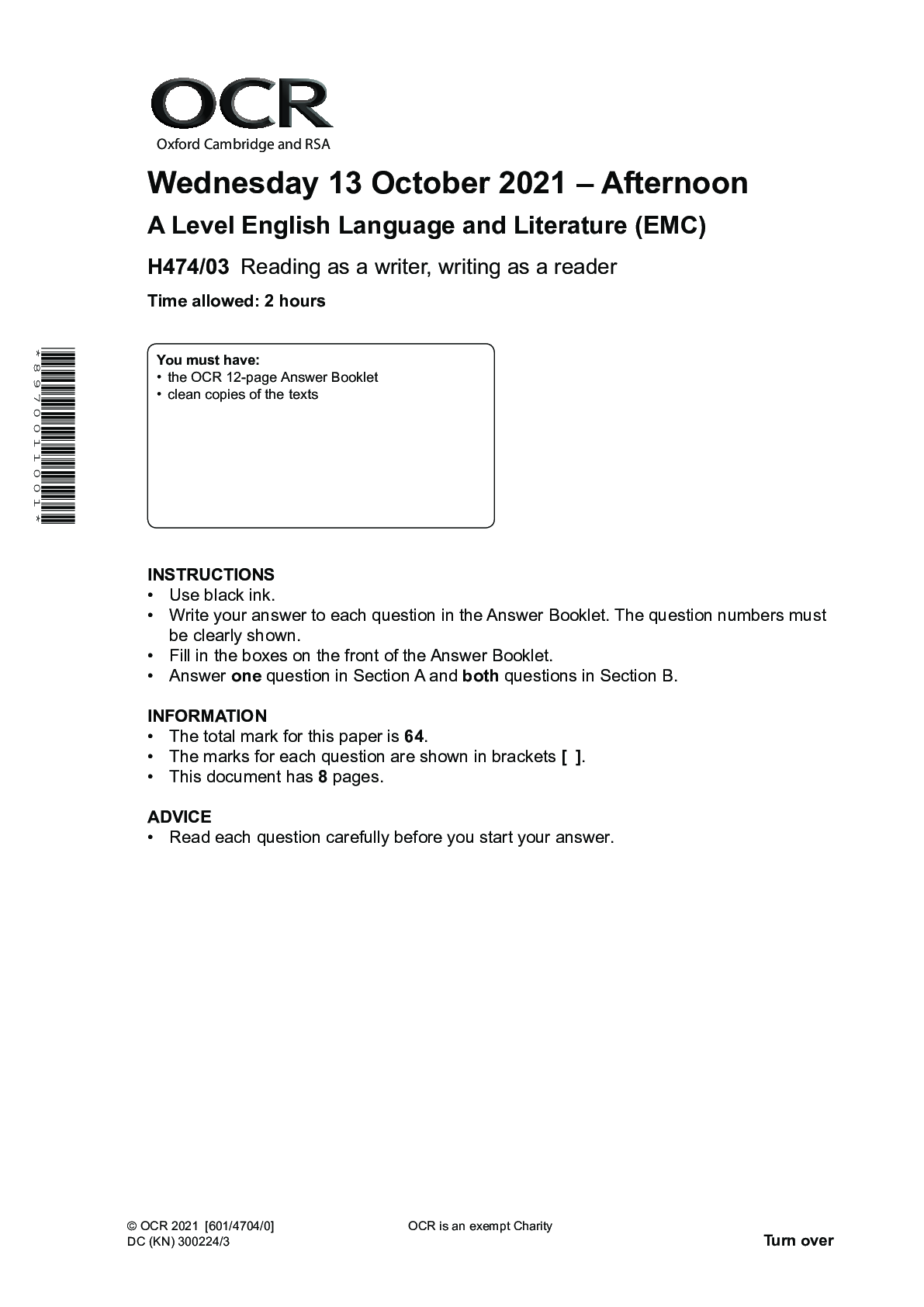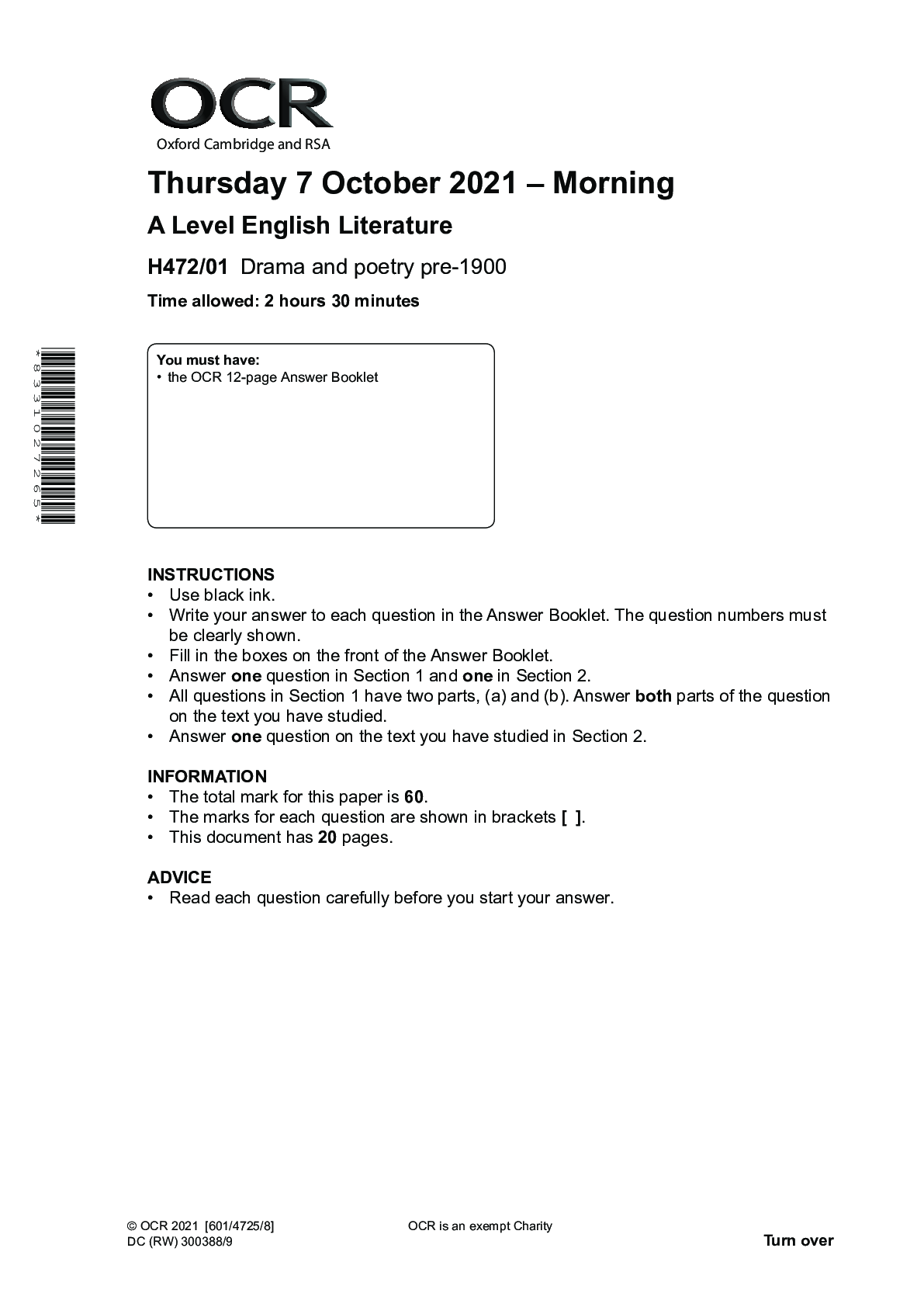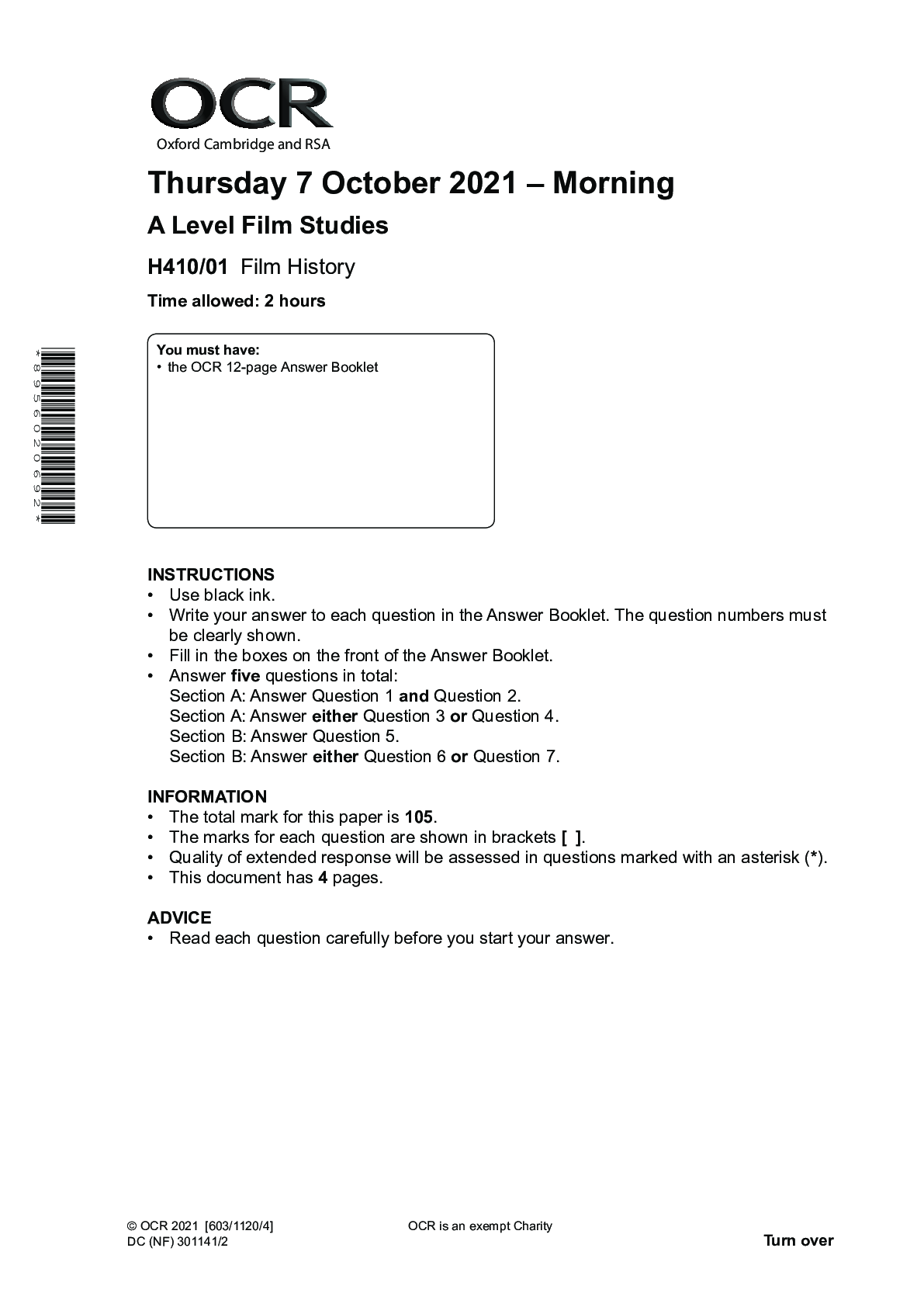Film Studies > QUESTION PAPER (QP) > OCR A Level Film Studies H410/01 Film History Practice paper. PREDICTOR QUESTIONS (All)
OCR A Level Film Studies H410/01 Film History Practice paper. PREDICTOR QUESTIONS
Document Content and Description Below
SECTION A – Film Form in US Cinema from the Silent Era to 1990 Answer Questions 1 and 2, and either Question 3 or Question 4 You should have studied one US film from each of the lists below. Quest... ions 1–4 require you to write about the US films you have studied. Silent Era 1930–1960 1961–1990 Birth of a Nation (1915). Directed by D.W. Griffith. USA. Citizen Kane (1941). Directed by Orson Welles. USA. 2001: A Space Odyssey (1968). Directed by Stanley Kubrick. USA. The Gold Rush (1925). Directed by Charles Chaplin. USA. Singin’ in the Rain (1952). Directed by Gene Kelly/Stanley Donen. USA. Raging Bull (1980). Directed by Martin Scorsese. USA. The Mark of Zorro (1920). Directed by Fred Niblo and Theodore Reed. USA. Stagecoach (1939). Directed by John Ford. USA. E.T. (1982). Directed by Steven Spielberg. USA. The General (1926). Directed by Clyde Bruckman / Buster Keaton. USA. Vertigo (1958). Directed by Alfred Hitchcock. USA. Do the Right Thing (1989). Directed by Spike Lee. USA. Sunrise (1927). Directed by FW Murnau. USA. Double Indemnity (1944). Directed by Billy Wilder. USA. The Conversation (1974). Directed by Frances Ford Coppola. USA. The Wind (1928). Directed by Victor Sjostrom. USA. All that Heaven Allows (1955). Directed by Douglas Sirk. USA. West Side Story (1961). Directed by Jerome Robbins / Robert Wise. USA. Answer Questions 1 and 2 1 With reference to a sequence from one film made in the silent era that you have studied, explain how mise-en-scène is used to make meaning. [10] 2 With reference to a sequence from one film from 1961–90 that you have studied, analyse how sound has been used to create aesthetic effects. [10] Answer either Question 3 or Question 4 EITHER 3* With reference to examples from one film from 1930–60 and one film from 1961–90, compare how performance contributes to the different aesthetics of the two films. [35] OR 4* With reference to examples from one film from the silent era and one film from 1961–90, compare how cinematography and editing are used in the two films to construct meaning and response.FIL [Show More]
Last updated: 1 year ago
Preview 1 out of 4 pages
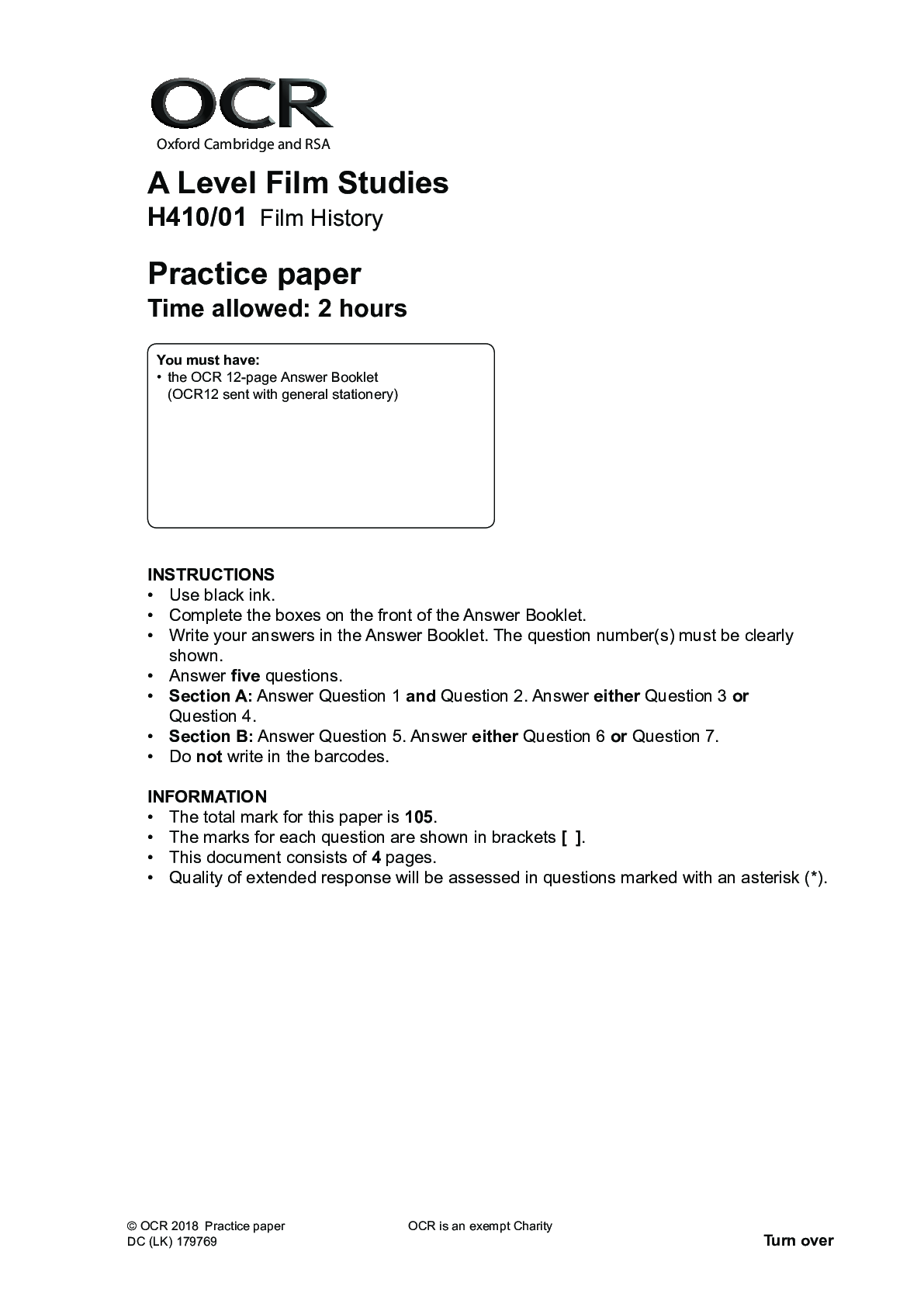
Buy this document to get the full access instantly
Instant Download Access after purchase
Add to cartInstant download
We Accept:

Reviews( 0 )
$8.00
Document information
Connected school, study & course
About the document
Uploaded On
Jun 29, 2022
Number of pages
4
Written in
Additional information
This document has been written for:
Uploaded
Jun 29, 2022
Downloads
0
Views
91


.png)
